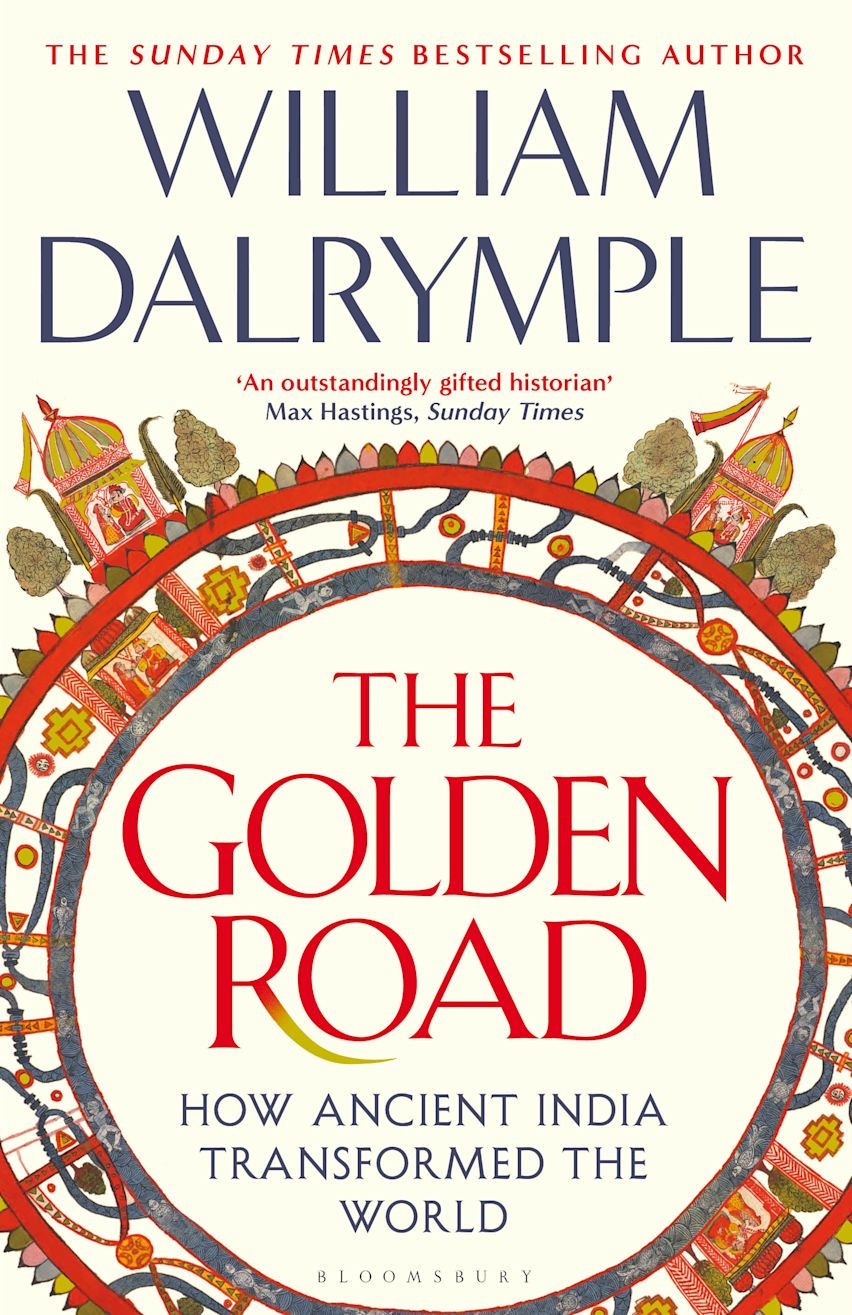With his new guide, the historian William Dalrymple has written a lucid and compelling account of why it’s India, not China, to which we owe an important developments in human civilisation. “The Golden Highway,” he writes, “goals to spotlight India’s usually forgotten place as a vital financial fulcrum and civilisational engine, on the coronary heart of the traditional and early medieval worlds, and as one of many most important motors of worldwide commerce and cultural transmission in early world historical past, absolutely on a par with and equal to China.”
He will need to have been vexed, then, to search out that the publication of his guide coincides with a blockbuster exhibition, Silk Roads, on the British Museum, which traces roughly from AD500 to 1000 the route in items and concepts between China and the West, a route that was given its identify by a Nineteenth-century German geographer, Ferdinand von Richthofen. Certainly, it’s this idea that Dalrymple is gunning for. “Items from China largely reached Rome merely as an unique complement to its thriving commerce with India … Silk was by no means the primary commodity imported to the West from the East … the Silk Route barely existed in antiquity.” So, farewell, Silk Roads; hey, Golden Highway.
So… are we extra grateful to the Indians, for the numerals we now name Arabic and the quantity zero – plus Buddhism – or to the Chinese language, for printing, gunpowder and paper? Silk versus peppercorns? Clearly, we’re indebted to each.
India has lengthy been acknowledged because the nursery of faith, and Dalrymple factors out that there’s a Christian neighborhood in Kerala that fairly plausibly attributes its origins to the apostle Thomas (although he suggests, bizarrely, that St Thomas, recognized in scripture as “the Twin”, was considered the dual of Christ… no, simply no).
He’s notably compelling in his account of Buddhism as the nice Indian contribution to religious thought. However, whereas emotionless pictures of the Buddha remind us that the religion maintains detachment from the world (there’s a strikingly emaciated model reproduced right here, generally known as the Fasting Buddha), Buddhism, like Islam later, was very a lot up for mercantile sponsorship; it was solely relaxed with its lay devotees making a living.
Whereas Hindu Brahmins regarded cash as tainted and caste-compromising, Buddhist monks cheerfully accepted funds from retailers and, as in Renaissance Italy, many stunning temple complexes have been funded by mercantile patrons. Buddhism was India’s biggest mental export to the East – crucially, to China, between the third and fifth centuries AD, whence it was transmitted to Japan and Korea (see the above-mentioned Silk Roads exhibition) – and, close to house, it flourished in present-day Afghanistan.
On the outset, Dalrymple acknowledges the hazard, as in Monty Python, of attributing nearly the whole lot to India and/or Buddhism, and typically the narrative looks like that. Christian monasticism? Buddhist monks. Congregational worship? Buddhist temples. Chinese language pagodas? Buddhist pillar shrines. However he’s cautious to not push the proof too far.

But in some circumstances the proof is overwhelming, as with the quantity of Roman gold that was discovered alongside the commerce routes with India: the map of the finds makes the case that from the time of Augustus, India was a vital buying and selling associate. He cites Roman authorities like Pliny, who took a dim view of the colossal sums that have been transferred from Rome to India to pay for luxurious items similar to diaphanous materials for foolish ladies, rubies and diamonds – and peppercorns, which Roman cooks adopted with enthusiasm – to not point out unique beasts, from leopards to a bad-tempered rhinoceros for the circus.
We discover right here a exceptional mosaic from Pompeii of a voluptuous lady who was plainly Indian (depictions of the feminine type are all nicely stacked), which can have been paid for by peppercorn site visitors.
A multifarious and fascinating narrative, which, like Indian commerce, takes us in lots of instructions, peppered with vigorous tales and charismatic people
This commerce was a product of a courageous improvement that was essential for India’s relations with the West – specifically, the harnessing of the monsoon winds that might sweep vessels westwards to the Crimson Sea in 40 days and again once more when the winds modified; going by land would take thrice as lengthy.
The Golden Highway, then, was a Golden Sea route, not less than in respect of Western site visitors, and the astonishing gold hoards present in now-Godforsaken outposts on the Crimson Sea testify to the sheer scale of the exchanges, which enriched Buddhist communities all alongside the Indian coast. One website had so many Roman items, it prompted the participating archaeologist Sir Mortimer Wheeler to assume that he had discovered the remnants of a Roman buying and selling colony; the truth is, it was Indian.
These have been thrilling locations of cultural alternate, and a melting pot that included Jews, Persians and Parthians. On this interval, the oceans weren’t limitations to commerce however the technique of conducting it. It was a special matter when Alexander the Nice got here to India, arduously, by land in 326BC, and was astonished on the skinny Indians with their beards colored blue or inexperienced, carrying parasols.
What about numbers? Wasn’t it the Arabs who gave us Arabic numerals? Properly, this brings us to a captivating ingredient of the narrative, which locates the transmission of Indian ideas of astronomy and arithmetic to Baghdad. Arithmetic in India was partly pushed by the necessity to time the Vedic ritual appropriately (equally, within the Outdated Testomony, God creates the heavens in order that males may know the instances of festivals).
The flourishing of Indian astronomy was solely a part of a exceptional custom of Indian arithmetic, which reached extraordinary sophistication beneath the Gupta dynasty from the early fourth to the sixth century AD and culminated within the composition of the Sindhind of Brahmagupta, a Seventh-century guide of complicated mathematical idea, which handled the image zero as the identical as the opposite 9 numerals (our 2, 5 and seven stay similar to the originals). It was this work that got here to Abbasid Baghdad in AD773, and from there, in the end, to Muslim Spain, and so forth to us.
The Golden Highway is, then, a multifarious and fascinating narrative, which, like Indian commerce, takes us in lots of instructions, peppered with vigorous tales and charismatic people. It’s going to make you take a look at the world in another way.
‘The Golden Highway’ by William Dalrymple (Bloomsbury), £30



